Why Do Dogs Become Reactive? | How to Fix a Reactive Dog | Games & Exercises | Socializing a Reactive Dog | Gear You’ll Need | Getting Extra Help
Does your dog freak out when he sees other dogs during walks? Does he lose his mind when joggers pass by? Have you ever been pulled off your feet because your pooch lunged at a skateboarder?
Yup, it sounds like you may have a reactive dog on your hands.
Having a reactive dog in your family can be super stressful, and embarrassing too!
The good news? You’re not alone! There are tons of us with reactive dogs (myself included), and we all share similar frustrations.
Don’t worry – in this guide we’ll explain everything you need when training a reactive dog. Yes, working with a reactive dog can challenging, but thankfully there are a number of techniques you can use to help your canine chill out a bit.
We’ll explain what reactivity in dogs is, share some of the reasons it occurs, and outline some training strategies for dealing with it below!
What is a Reactive Dog?
A reactive dog is a dog that barks, lunges, or otherwise shows extreme or irregular responses to certain triggers.
All animals (humans included) will react to frightening or stressful situations, and that makes sense! But dogs are classified as reactive when their behavioral response is extreme and not in appropriate proportion to the trigger.
So, for example, it would be reasonable and normal for a dog to bark and growl at a bear or another large, threatening animal. But a dog would be considered reactive if he barks and growls at non-threatening things, like another dog across the street or a guest coming into your home.

A random dog walking across the street and a guest welcomed into the home shouldn’t (at least in our human opinion) warrant an aggressive display of barking and lunging. The reaction is not warranted or in proportion to the threat – it is an irrational response.
And that’s part of the problem – a dog displaying reactive behavior is not thinking logically. Even if the dog has no reason to be afraid of the dog across the street or a guest entering the home, a reactive dog’s emotional experience of fear, stress, or arousal is very real (which is why we should be kind to our reactive dogs, no matter how frustrating their behavior can be at times).
Training a reactive dog ethically and responsibly to tamp down these kinds of over-the-top responses involves changing those underlying emotions the dog is experiencing.
Simply put, you want to change the fearful, stressful feelings associated with your dog’s trigger to calm, happy emotions.
What Does a Reactive Dog Look Like?
Since a reactive dog is any dog that displays an extreme or disproportionate response to a stimulus, reactivity can be displayed through all sorts of behaviors.
In fact, even a dog who gets overly excited in a friendly way when greeting humans or other dogs could be considered reactive. However, most humans aren’t bothered by this kind of reactivity.
When people classify a dog as reactive, it’s usually because they are displaying what we might consider aggressive behaviors due to fear or stress.
Dogs most often display reactivity through:
- Barking
- Lunging
However, dogs can also display reactive behavior in other ways, such as:
- Crouching and cowering
- Lying down and refusing to move
- Whining
- Running away (“bolting”)
- Hiding
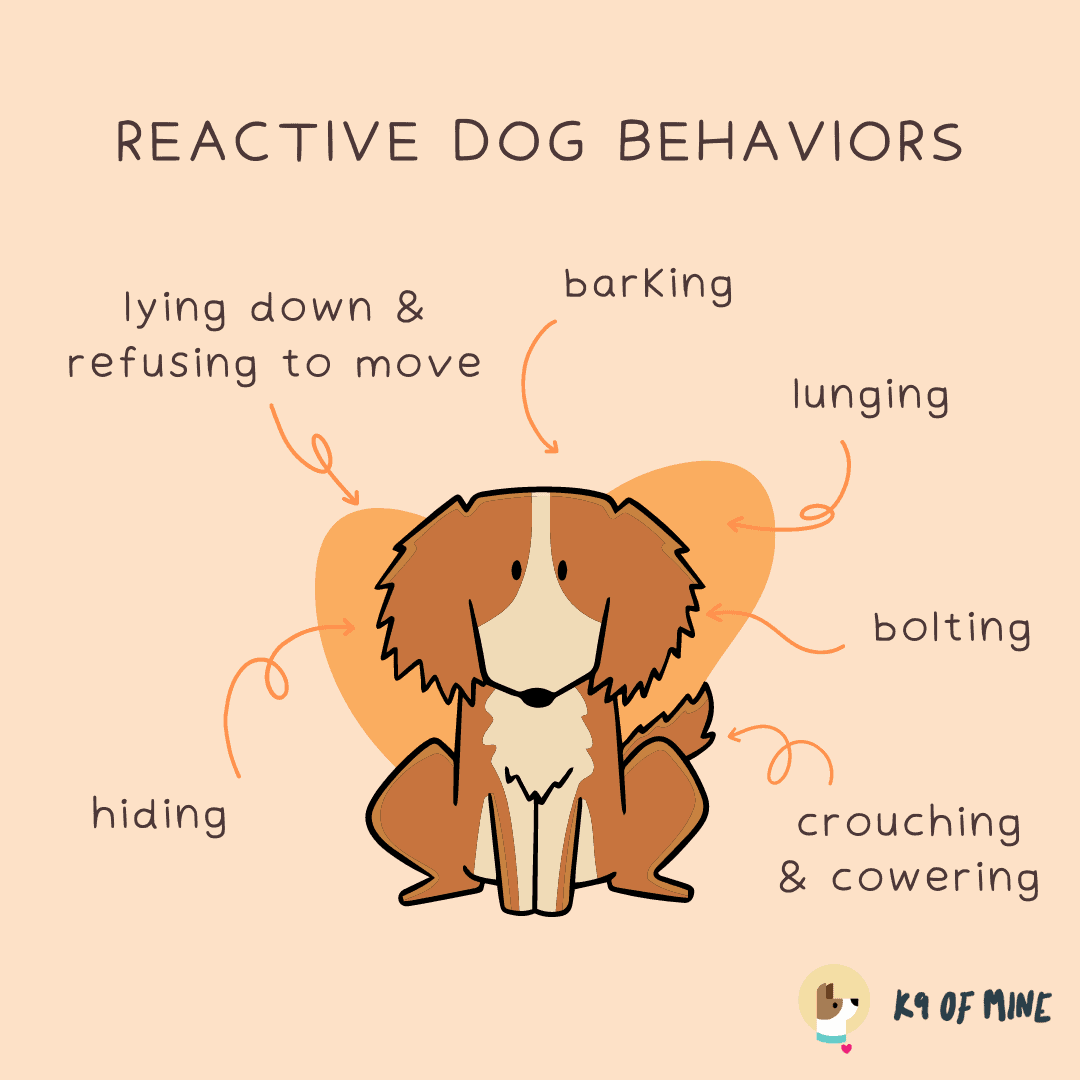
What Are Common Triggers for Reactive Dogs?
The triggers that cause a reactive dog to flip out can vary depending on the canine. Animals and humans are the most common triggers, but inanimate objects can be triggers as well.
Common triggers for a reactive dog can include:
- Other dogs
- Strange humans
- Other animals
- Bicycles, scooters, skateboards, baby carriages
- People wearing certain clothing (hats, large jackets, masks, sunglasses)
- People with mobility aids (wheelchairs, walkers, crutches)
- People of a specific sex (such as men)
- Objects such as curb-side trash cans or umbrellas
- Cars or buses
While these are common triggers, a trigger can really be anything that elicits an extreme response from a dog. My own poorly socialized rescue dog is even reactive towards streams, lakes, or any moving body of water!
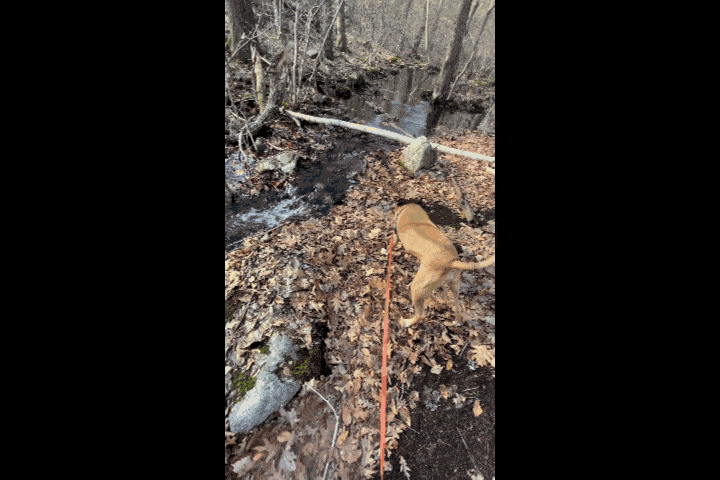
Usually, a trigger is an item, person, or animal that makes the dog uncomfortable or scared.
Why Do Dogs Become Reactive?
Dogs can become reactive for a number of reasons, and for most reactive dogs it’s due to a combination of contributing factors.
Nevertheless, reactive dogs are usually experiencing one of two emotions:
- Fear
- Excitement
We’ll examine some of the most common causes of canine reactivity in greater detail below.
Lack of Socialization
As we explain in detail in our puppy socialization checklist, dogs go through a prime socialization period during the first 3 to 16 weeks of their lives.
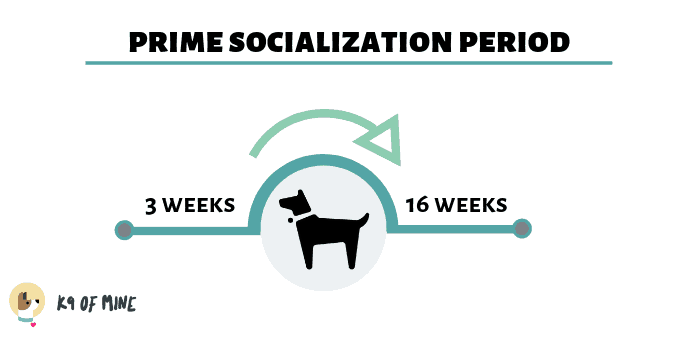
During this period, your puppy is like a little sponge, learning about the world and soaking up all kinds of new experiences. At this stage, the puppy’s natural response to novel situations and experiences is neutral.
When pups are exposed to various situations and stimuli during the puppy socialization period, those situations and stimuli become regular and “normal” as he matures into an adult dog.
However, if an adult dog has never been exposed to a certain stimulus as a puppy, that new stimulus will be treated with apprehension, caution, or even terror.
It’s helpful to think about this in the context of wild canines.
A wild dog’s mother spends early months showing her pup how to find food and how to dig through leaves and dirt, as well as which noises mean danger and which mean prey is nearby.
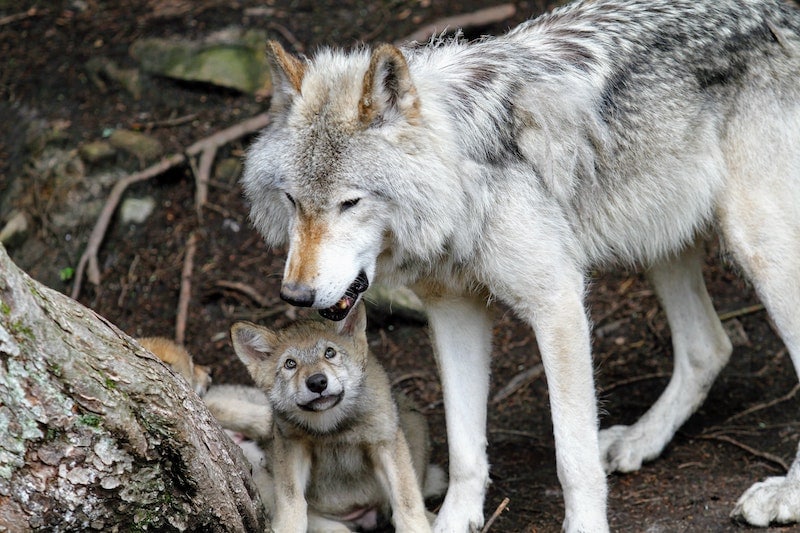
Basically, the pup learns about how the world works.
Once the pup has learned what to expect from his environment, that becomes ingrained for him as he transitions to adulthood. If an adult dog encounters a new or strange situation in the wild, that almost always means danger and nothing else.
This is why exposing your puppy to a variety of environments, people, and other animals is essential for raising a confident adult dog.
Of course, life doesn’t always work out as planned, and many owners may find themselves unable to socialize their puppy properly – whether that’s due to an international pandemic or adopting a rescue dog whose puppyhood is a mystery.
Genetics
Some breeds are genetically predisposed to being more anxious and fearful, which in turn results in a higher likelihood of reactivity.
This is often the case for dogs who have historically been bred to be watchdogs, like Rottweilers, Dobermans, and German shepherds. Since these dogs were required to be on alert constantly and scare off potential threats, they generally have higher baseline anxiety levels.
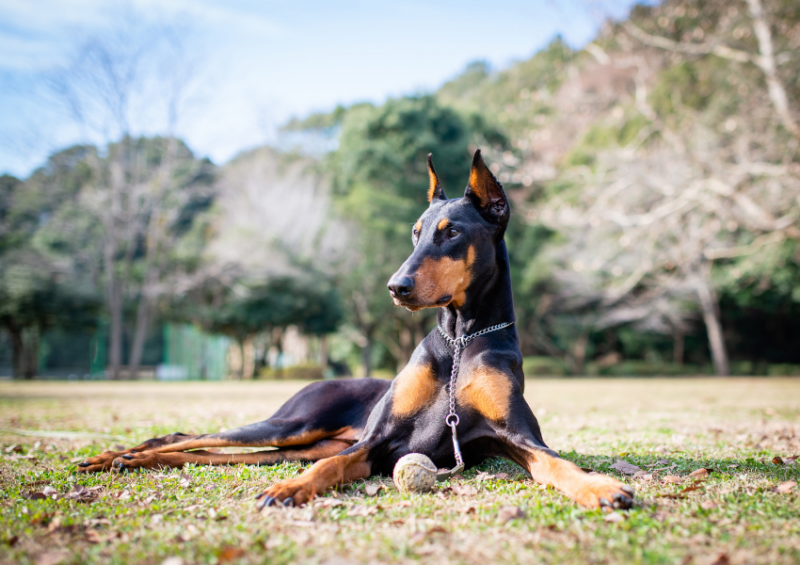
When these breeds are used as watchdogs, that increased anxiety is an advantage. But, as increasingly more of us view our dogs more as family members rather than living alarm systems, those higher rates of anxiety and fear become disadvantages rather than advantages.
For dogs who have a genetic predisposition to heightened arousal (whether that’s due to a terrier’s prey drive or a German shepherd’s alertness for guard work), that stress and fear in response to triggers can be even more extreme.
On top of breed-specific genetics, there are simply individual genetics passed on from a dog’s parents.
If a puppy’s parents were strays who had to be on constant alert for danger, the puppy will likely inherit that propensity for alertness and anxiety. Similarly, if a pregnant dog gives birth in a stressful shelter environment, those pups will be more likely to have elevated rates of anxiety.
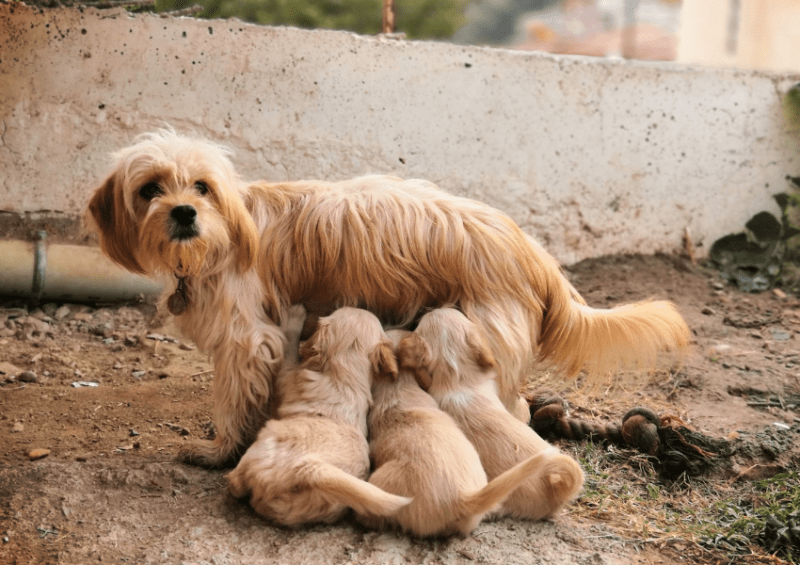
Certified dog behavior consultant Kayla Fratt goes into greater detail regarding canine genetics in our article about nature vs nurture in dogs, but basically, the parents’ experiences can greatly influence a puppy’s disposition, and that’s not something we always have control over.
It’s worth noting that inherited genetic trauma is true for humans too!
Researchers are finding that a traumatic incident that happens to your great grandparents can influence your anxiety levels or disposition. Mark Wolynn’s It Didn’t Start With You explores this in detail on the human side of the spectrum!
Age
Young dogs tend to be more reactive than older dogs, simply due to their lack of worldly experiences.
In addition to a puppy going through a prime socialization period, they’ll also go through puppy fear periods. During these periods, pups are more sensitive and fearful of stimuli, which can increase their reactivity.
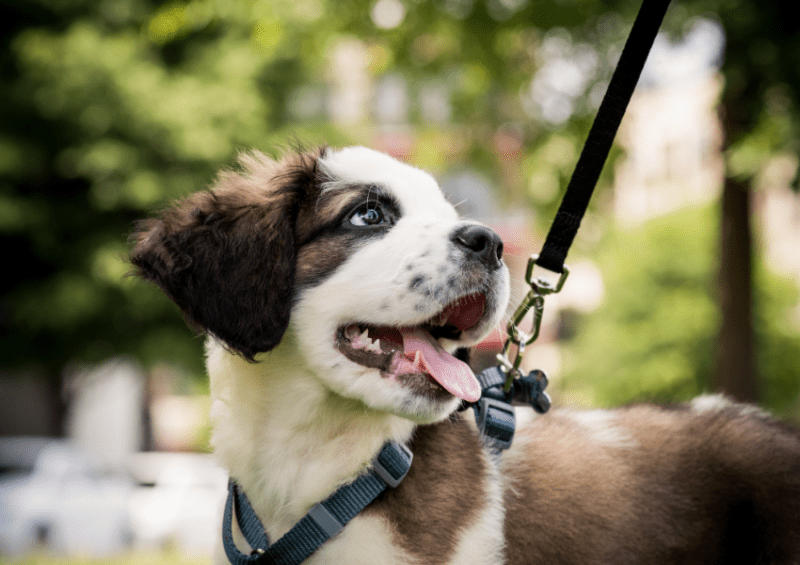
Luckily, fear periods are temporary and well-adapted pups usually return to their previous dispositions in short order.
On the other hand, very old dogs can become more reactive at times.
Senior dogs can usually go one of two ways: Some have lived an experience-filled life where they’ve seen everything under the sun and nothing phases or bothers them. However, for other senior dogs, old age brings a host of frustrations and illnesses. Senior dogs may suffer from arthritis or other physical ailments that make them less tolerant and more grumpy than usual.
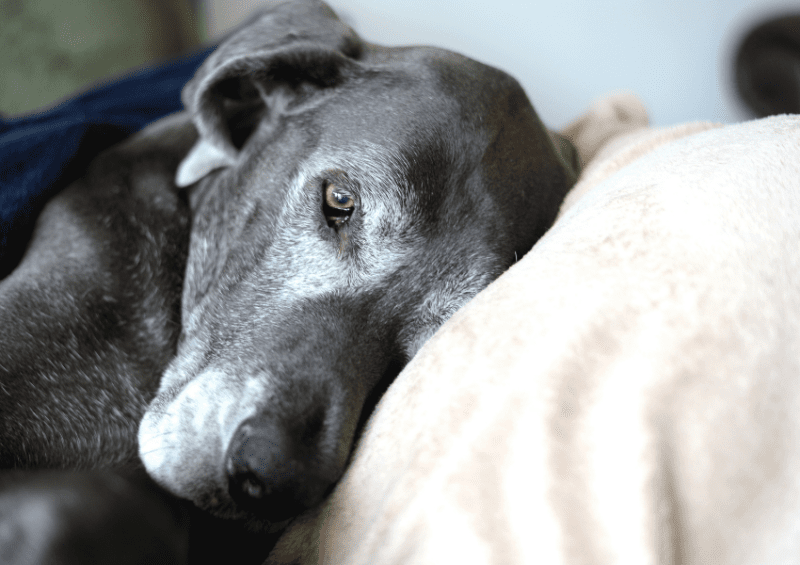
Dogs can’t tell us when they are in pain, so many times older dogs suffer their aches and pains quitely, only cluing us in that something might be wrong when they uncharacteristically snap at their younger sibling.
In fact, this is why you should always visit the vet anytime your dog displays a dramatic change in behavior.
In addition to aches and pains that might make a senior dog more temperamental, older dogs can also experience varying degrees of blindness or deafness.
This can obviously be somewhat frightening, which may result in a jumpier, more fearful dog who can be easily startled. And this often results in increasing displays of reactive behavior.
Insufficient Enrichment
Dogs can also experience reactivity due in part to a lack of enrichment. Simply put, you may not be giving your dog enough entertainment to keep his brain buzzing.
One aspect of this is simply boredom.
A dog who sits around, bored out of his mind, needs to find something to do, and this something might be barking like mad at any person who walks by your home.
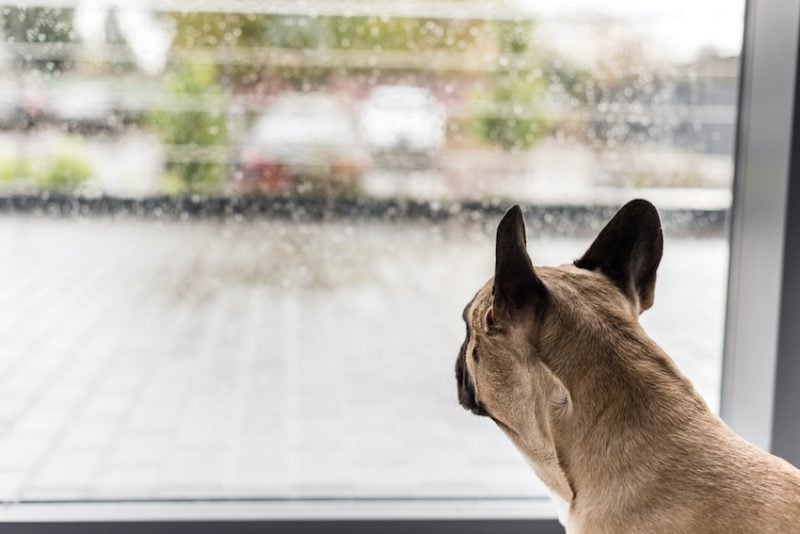
Enrichment is also essential for bringing down a dog’s stress levels. Just as exercise is a commonly-prescribed remedy for human anxiety, dogs too need to experience physical and mental exercise to burn off nervous energy.
Long sniff walks or trail hikes are popular options, but there are tons of great dog enrichment activities and games you can provide your dog that don’t even involve leaving the house.
From stuffed Kongs and dog puzzle toys, to cardboard shredding and scavenger hunts, giving your dog ways to use his natural instincts and exercise his brain, nose, and mouth can go a long way to eliminating behavior issues. And that may include reducing his reactivity.
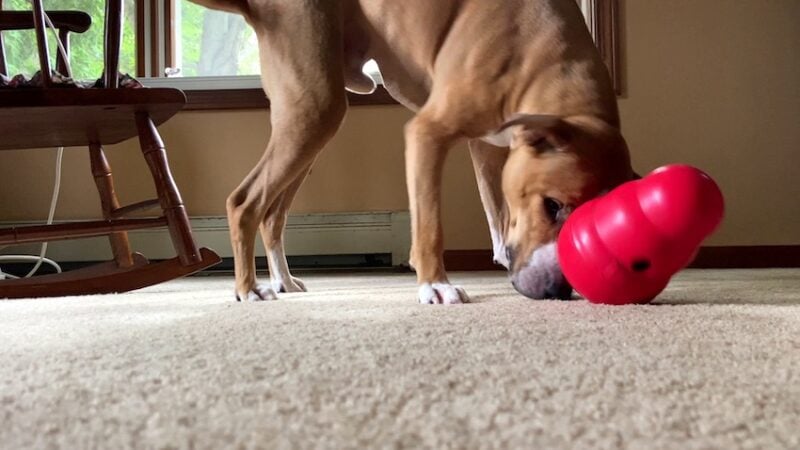
Fear
The vast majority of reactive dogs experience fear-based reactivity. They display reactive behaviors in response to being afraid of the triggers that they encounter.
Most assume that a fearful dog will cry, whine, or try to hide when afraid. And that’s certainly how some dogs respond to fear. But many dogs will put on aggressive displays of barking and lunging in an effort to scare off the anxiety-provoking trigger.
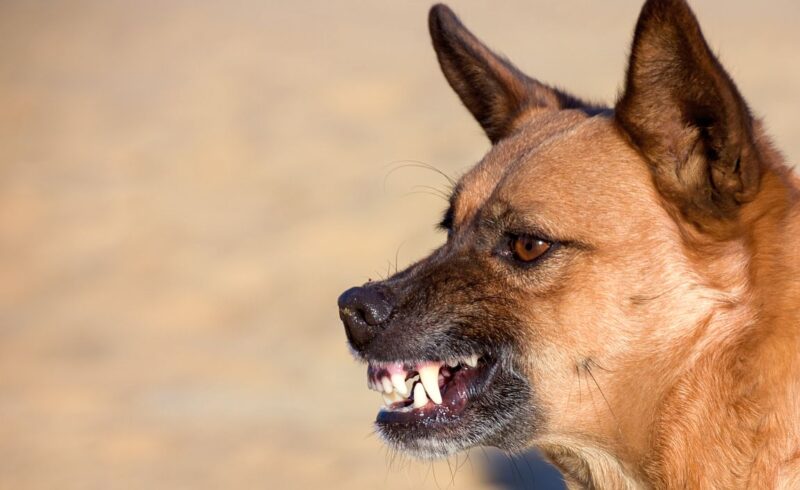
Animals know that showing weakness can be dangerous, and instinctually many dogs will tap into that fight or flight instinct when they feel they are in danger, which drives them to make an offensive display in an effort to protect themselves.
Excitement
Another common type of reactivity is excitement-based reactivity. Dogs displaying this kind of reactivity are often called “frustrated greeters.”
These dogs are not afraid of their triggers, but rather they are just so darn excited that they can’t control themselves.
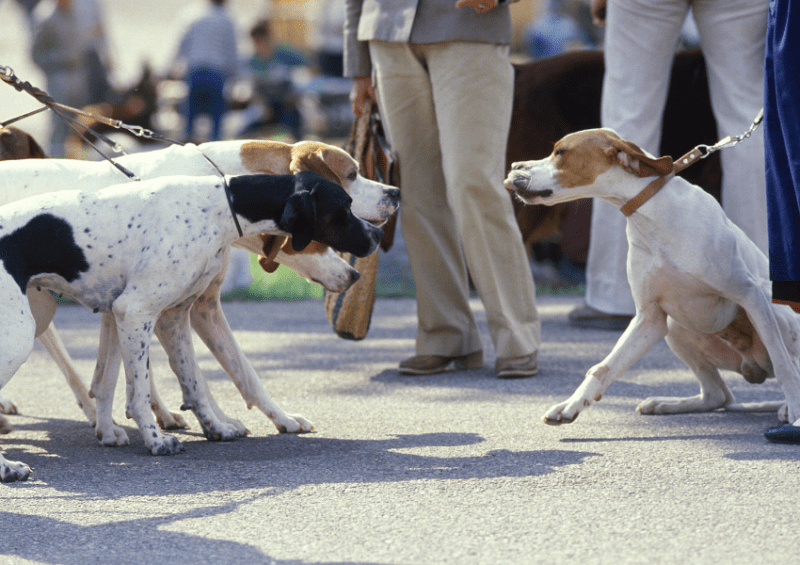
Excitement-based reactivity may seem like the better option of the two, but it can be just as challenging as fear-based reactivity. I can speak from experience because my own dog has excitement-based reactivity!
Some frustrated greeters settle down once they’re off leash, and many owners of frustrated greeters express exasperation that their dog might act like a psychopath on leash, but be fine when off-leash.
These types of dogs are classified as leash reactive dogs.
Resolving issues with excited reactive dogs may seem simple enough – if they bark and lunge in an effort to get to other dogs, why not just let them go say hello?
The problem with this is that:
A) It reinforces the barking and lunging behavior, as the dog learns that this behavior gets him what he wants: access to the other dog.
B) It’s rude and downright scary for the dog that is being greeted, and the reactive dog’s extreme exuberance may even be so overwhelming to the other dog that a fight can break out.
It’s simply not safe to let a reactive dog approach another dog in a flurry of barking, lunging, or other extreme overwhelming behaviors. If nothing else, it can be very upsetting to the other dog.
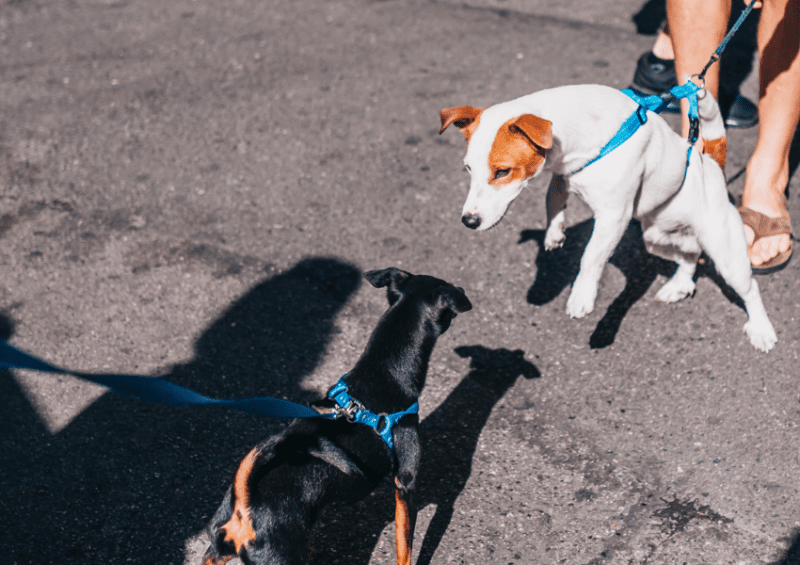
That being said, if you know the dog being greeted, know his personality, and are confident that he can handle your own dog’s exuberance, appropriate play dates can happen for reactive dogs. But this isn’t the norm!
It’s worth noting that “excited” isn’t always a positive emotion for dogs. For some dogs, a better word to describe their emotional state would be “aroused.”
For dogs like my own reactive dog Remy, strange people and strange dogs are extremely interesting – but the jury is out on if those triggers are a “good” interesting or “bad” interesting.
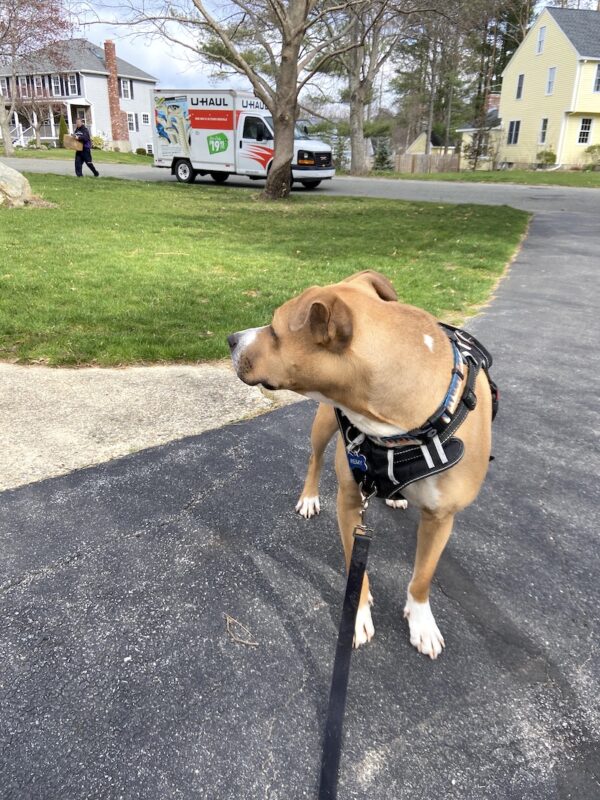
Excitement and anxiety share very similar physiological responses, resulting in an elevated heart rate and feelings of butterflies in the stomach. Both are states of heightened arousal, and many therapists have noted that it’s actually easier for humans to switch our brains from a state of anxiousness to excitement, rather than from an elevated anxious state to a calm state.
One Harvard study found that participants were able to change their orientation towards stressful events (such as a public speaking or a exam test), by repeating to themselves that they were “excited” rather than nervous, in an exercise referred to as “anxiety reappraisal.”
Unfortunately, dogs don’t possess the level of consciousness needed to practice anxiety reappraisal. Many dogs struggle to decide if they are excited, anxious, or a bit of both. They aren’t exactly sure what their feelings are, but they are definitely big feelings. We often refer to these dogs as “high arousal” dogs.
To make matters more complicated, highly-aroused dogs often tend to get mouthier as their arousal levels increase. All that excited, aroused energy results in less self-control.
That’s why my own dog will sometimes grab at a strange guest’s clothing in a heightened display of mouthiness due to that arousal he is experiencing in his elevated state.
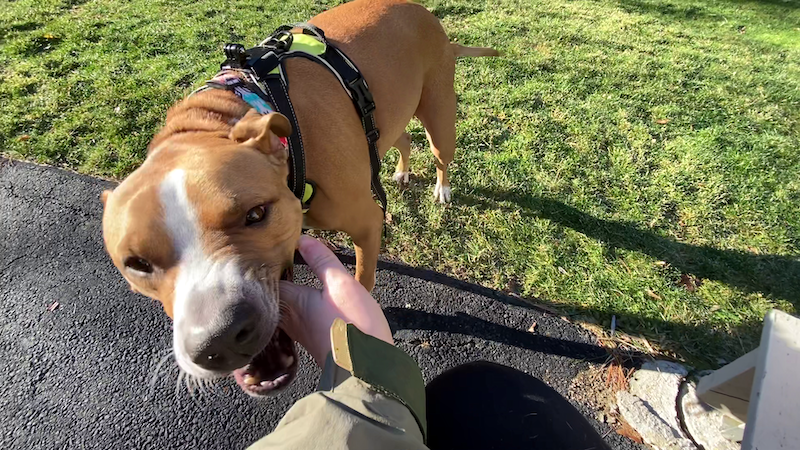
How to Fix a Reactive Dog Through Training: It’s All About Desensitization and Counter-Conditioning
When it comes to working with a reactive dog, it’s all about desensitization and counter-conditioning! Let’s break down exactly what those terms mean.
Step 1: Desensitization
Simply put, dog desensitization is the process of intentionally exposing your dog to an event or trigger in a controlled, limited way.
The goal of desensitization is to gradually get your dog accustomed to the stressful trigger while staying “under threshold” – meaning that your dog remains in a calm emotional state without displaying signs of fear or arousal.
Basically, desensitization is simply the practice of making those stimulating triggers not so new or novel, so that they become less “special” and worthy of attention.
Familiarity results in increased comfort and less arousal.
Just as your dog might go nuts playing with a new toy, only to ignore it a week later, the goal with desensitization is to expose your dog to their triggers so that they are no longer unique.
Check out some examples of desensitization work to better understand how the approach works:
- For a Dog Who’s Reactive Towards Children: Taking your dog to a playground or the grounds of a school as class lets out, allowing him to observe children at a safe distance where he can stay calm and under threshold.
- For a Dog Who’s Reactive Towards Other Dogs: Taking your pup to the parking lot or outer area of a dog park, keeping him 20 feet or so away from the fence-line, at a distance where he can see other dogs but still far enough away to remain calm, disengage enough to look at you, accept treats, and sniff the environment.
This may not seem like especially exciting training work, but your dog’s gradual exposure to triggers with no negative result teaches him, “I saw that scary thing, and nothing bad happened.”
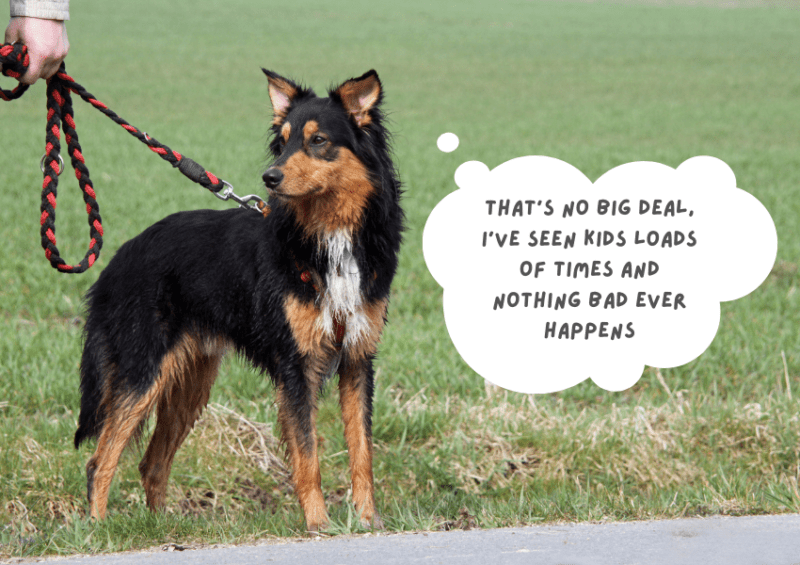
On top of that, since your dog isn’t reaching his threshold and isn’t barking and lunging during his encounter with the trigger, you’re preventing him from “practicing” the undesirable behavior (and since practicing a behavior reinforces it, this is a big deal).
Some owners can find success by simply exposing their dog to triggers while keeping the four-footer under his threshold. But, in most cases, you’ll need to incorporate a second component –counter-conditioning– to see desired results.
Let’s talk about counter-conditioning and how it works in conjunction with desensitization!
Step 2: Counter-Conditioning
Counter-conditioning refers to the process of changing your dog’s emotional response toward a stimulus. You want to alter his negative, fearful, or over-aroused response to something calm and positive.
How do you do this?
It’s actually pretty easy in theory – we pair the scary trigger with something awesome, like cheese, bacon, or some other high-value training treat.
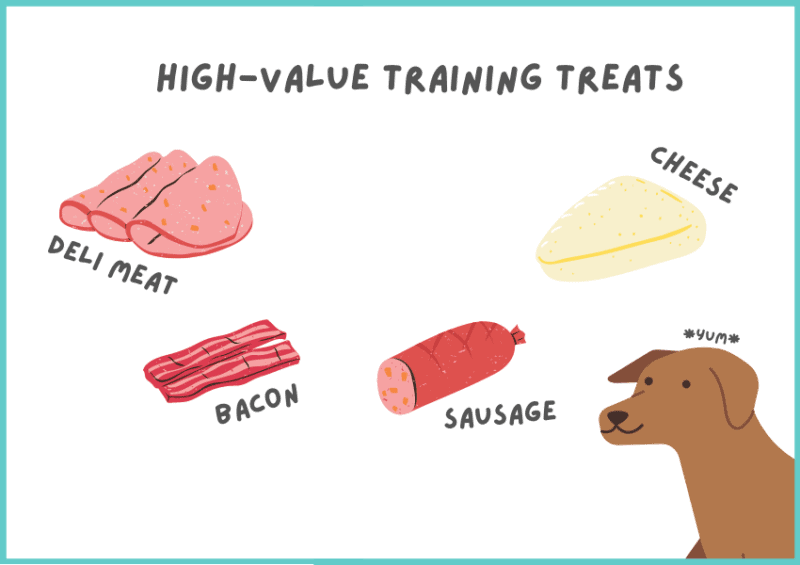
High-value treats are really important for counter-conditioning. You don’t want to just be giving your dog kibble or treats that your pup gets for performing basic tricks.- Counter-conditioning treats need to be super special!
When counter-conditioning your reactive dog to a trigger, he doesn’t have to actually have to do anything, other than see the trigger and observe it calmly. As soon as the trigger appears he should consistently get tasty treats, so long as he is staying under threshold.
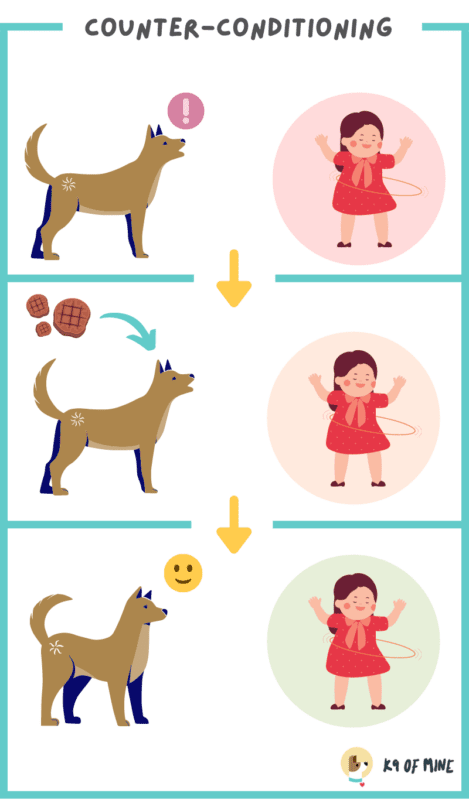
For our example above with a dog who is reactive towards children, the owner would keep the dog at a distance from the playground where the dog could still remain calm (that’s the desensitization aspect) and feed the dog treats whenever he looks directly at a child or hears a child scream (that’s the counter-conditioning part).
If this practice is done over time, the dog will stop associating children with feelings of fear or nervousness, and will instead associate children with good feelings!
Step 3: Combining Desensitization and Counter Conditioning
Now that we’ve explained what desensitization and counter-conditioning are, it’s probably no surprise that they work hand in hand.
If you expose your reactive dog to a trigger at a below-threshold level while also giving your pup goodies when he remains calm, you are desensitizing him to the trigger (being in the presence of the trigger) while also using counter-conditioning (using treats to change the dog’s underlying emotional response to the trigger).
Note that for both desensitization and counter-conditioning to work, your dog must remain below threshold.
Step 4: Closing Distance Over Time
Every reactive training session where your dog practices being calm around triggers helps him learn. His brain is working away, and he’ll slowly realize that his triggers are nothing to be worried about.
As he becomes increasingly more comfortable with triggers, you can slowly reduce the distance between him and the things that cause him to overreact.
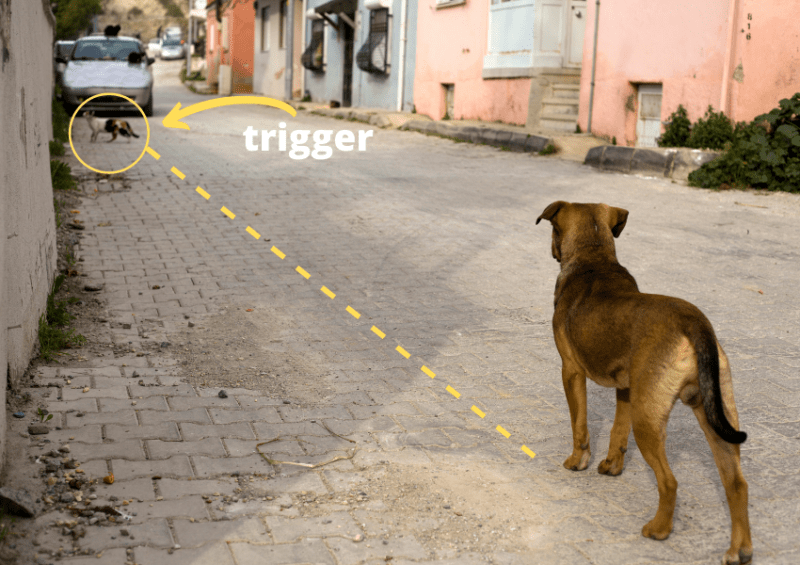
Just understand that you need to keep your dog under his threshold while reducing the distance. This means it’s essential that you listen to your dog’s body language and nonverbal cues.
If he starts to get worked up, or stops accepting treats, you are too close and need to move back a bit until he calms back down.
Sometimes this process takes weeks, months, or even more time, but that’s OK – you can’t rush your dog and success won’t occur overnight.
Every individual dog has a unique tolerance threshold. This threshold isn’t static – it can change depending on the day and what other stressors your dog has recently experienced.
Trigger Stacking and the Spoons Theory
The accumulation of stressors that reactive dogs experience is similar to something called the “spoons theory.”
The concept of the spoons theory is that each of us has a set number of spoons each day. Each stressor you experience in a given day causes you to lose a spoon. If you run out of spoons, you end up over your threshold and basically fall apart.

For example, imagine you are getting ready to go to work one morning and you spill coffee on your pants, so you have to change.
No biggie, but you also don’t have time to make another cup of coffee – yikes.
Then, on your way to the office, you have a close call with a truck that leaves you feeling shaken. When you finally arrive at the office, you can’t find a parking space, so you have to park in the next lot over and walk further to the office (and in uncomfortable shoes at that).
You sit down at your computer only to find your mouse is dead, so you have to go track down new batteries for it.
The next thing you know, your co-worker comes over to ask you a simple question. But instead of responding calmly, you snap at him. To your co-worker, you’ve been rude for no reason at all.
But in reality – and unbeknownst to your co-worker – you’ve blown through all your spoons and are at your wit’s end!
We only have so much patience, so much mental capacity each day, and when several stressors stack up one after another in a single day, we lose control of ourselves. By the end of the day we can be especially snappy and generally unpleasant to be around!
This is why studies have shown that judges tend to pass more lenient sentencing in the morning, while doling out harsher penalties in the afternoon..
The spoon theory applies to dogs as well, but since their spoon-removing triggers aren’t the same as ours, they can be easy to overlook.
In dog training, this gradual loss of spoons is referred to as “trigger stacking.”
As your dog encounters increasingly more triggers in a given day ,his ability to stay calm erodes.
This can explain why a reactive dog might be fine with a bicycle a few feet away one day, only to go crazy when a bicycle wizzes by across the street a few days later.
So, when dealing with a reactive Rover, be sure to ask yourself what stressors he has already encountered that day.
Was your dog forced to defend the house from the Amazon driver? Did your dog go for a car ride in the afternoon? Did the neighborhood feral cat saunter in front of the window all evening?
All these events – even the fun, exciting ones – are mentally draining for your dog and can cause triggers to stack up faster than they might normally.
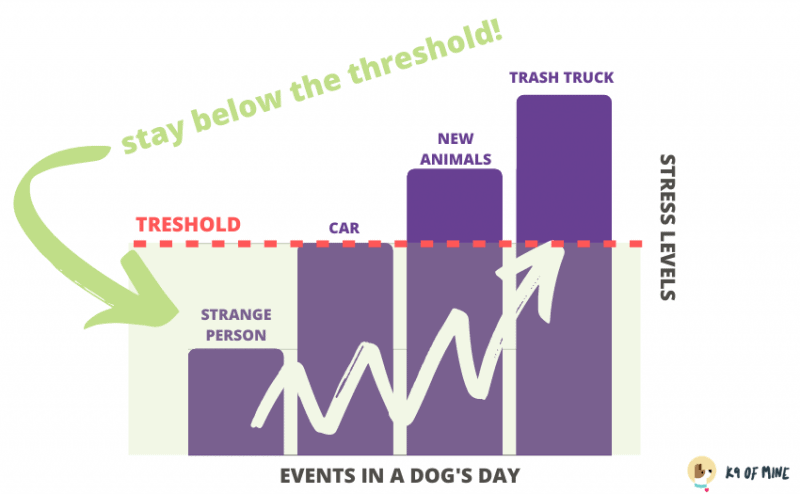
So, when possible, try to keep track of how many triggers your dog has already had to encounter in the day.
Meet Your Dog Where He’s At
It’s critical you respect your dog’s boundaries and accept the space he needs to prevent him from becoming overly aroused.
Remember, just because you feel like your dog should be able to handle being twenty feet from a bicycle doesn’t mean that he can. Start at a distance your dog is comfortable with not the distance you think he should be comfortable with.
Training Games and Activities to Work on Decreasing Reactivity
Desensitization and counter-conditioning are the methods you’ll be using to work on your dog’s reactivity, but sometimes it can be hard to think about how to employ these concepts during your day-to-day life in order to really improve your pup’s behavior.
But here comes some four-footed fun to the rescue!
That’s right – games can be very helpful for addressing reactivity. Check out a few of our favorite canine reactivity games below. With enough repetition, you should definitely see some improvements in your dog’s reactivity if you regularly engage in these games and activities!
Walking Exercises & Cues
- Pattern Games: Pattern games, popularized by canine behavior expert Leslie McDevitt, use patterns and systems to comfort your dog through predictable movements. Rather than hyperfocusing on fear or arousal, the dog knows what to expect from your pattern-based movements and allows them to predict the next action in the pattern series.
- “Look at Me” Check-Ins: This game involves teaching your dog to “check-in” and look at you throughout walks. This helps your dog to practice breaking focus from triggers rather than hyper-fixating on what’s happening in his environment. A similiar variation of this is the Engage/Disengage game, which we have a video explaining below!
- U-Turn. Teach your dog a U-turn cue is a fun game that trains your dog to stop his forward movement and turn around to reverse course. This is great for those times when you’re faced with a trigger ahead in your path.
- Heel Cue. Teaching your dog to “heel” (walk beside you while staying even with your heels) can allow the dog to put his energy into walking close by your side (and getting rewarded for that fantastic heel), giving the dog something to focus on besides his trigger.
- Hand Target. Hand targeting involves a dog touching his nose to your open palm when cued. Not only is this a great alternative, non-compatible behavior (meaning that your dog can’t hand target and stare down a trigger at the same time), it can also be used to move your dog off the couch, as a recall cue, and more! It’s an incredibly versatile cue and one of my personal favorites.
- Switch Sides. Teaching your dog to switch from walking beside your left leg to your right leg (and vice versa) is helpful for creating some extra distance between your dog and his trigger. It also allows you to use your own body as a visual barrier between your dog and his trigger.
B.A.T.
B.A.T stands for Behavior Adjustment Training, and it’s a specific method developed by CPDT-KA certified dog professional, Grish Stewart.
B.A.T. is all about giving a reactive dog options in a safe setting, allowing the dog to control the interaction while gaining confidence.
The basics of B.A.T. are fairly simple and straightforward; you attach your dog to a long line (usually around 15 feet) and allow the dog to explore, sniff, and interact in the world through a balance of freedom and safety. The goal is to provide a sensation that’s as close to feeling off-leash as possible, while still remaining safely tethered in case things get out of control. It essentially lets your dog lead the way and make decisions.
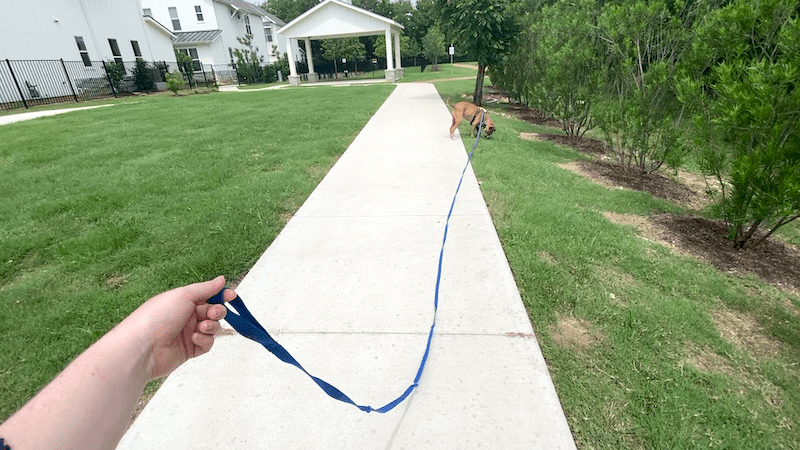
With B.A.T., you start off at a distance where your dog can remain under threshold near his triggers, and simply let your dog explore and soak up the environment (including the trigger) in a natural, calming manner.
Having a stimulating, enriching environment is essential for this approach.
So, for example, you would want to practice B.A.T. at a park, where dogs, kiddos, and skateboards abound. But an empty asphalt parking lot wouldn’t be ideal, as it lacks sufficient sources of stimulation and most triggers.
Grish Stewart attests that when a dog is exploring and sniffing around a new outdoor environment, he is put into a state of information-gathering, rather than a state where he is primed to be alert and reactive towards triggers.
This information-gathering mode allows him to form new opinions of his triggers.
In a nutshell, B.A.T. is a form of exposure therapy and desensitization, but one that offers more control to the dog and relies less on food.
While the basics of B.A.T are easy to understand, there’s a specific set of leash skills that are critical to successfully implementing B.A.T. Learn about the necessary leash skills required at the official B.A.T. website!
Mat Training and Relaxation Protocol
Many owners of reactive canines also find that they have great success with dog mat training and establishing a relaxation routine involving a mat.
Mat training itself revolves around teaching your dog to “settle” in a specific area. While traditionally owners might train a place cue with a crate or a dog bed, mat training usually involves a light, portable mat that can be used indoors as well as outdoors.
With mat training, you’ll practice having your dog go and lie down on the mat – first indoors, and then in increasingly more challenging and stimulating environments.
Once your dog begins to connect the mat with being in a calm, relaxed state, it can be used to help soothe him in the presence of triggers.
One of the most well-established relaxation routines is Karen Overall’s Relaxation Protocol, in which a dog is taught to stay in a “down” position while you make odd movements like clapping your hands and jumping up and down.
With repetition, your dog will learn how to remain calm and relaxed even when strange, weird things are happening around him.
Management: Another Approach for Reactive Dogs
Management refers to any method used to manage the environment in order to prevent your dog from practicing problematic behaviors.
When talking about your reactive dog, this means using your surroundings or creating distractions to avoid putting him in a situation where he is not likely to succeed.
Management is basically what you’ll be using whenever you’re not actively, intentionally doing behavior modification in “training mode”. It’s giving your dog those easy wins!
Many reactive dog owners will rely on management strategies as their bread and butter. You simply can’t be doing controlled counter-conditioning and desensitization plans every minute of every day.
Sometimes you just need to get outside and go for a walk!
Let’s dive into some of the most popular management techniques for keeping your dog under his threshold and helping to prevent those reactive responses. Check out our video below for some real world examples of reactive dog management skills on walks, or keep reading as we detail some of our favorite strategies below!
Sight Line Barriers
Unless you’re specifically working on desensitization or counter-conditioning, it’s always smart to utilize sightline barriers to stop your dog from staring and fixating on triggers.
Common sightline barriers include things like:
- Benches
- Parked cars
- Trees
- Trash cans
You can even use your body as a sightline barrier!
Even when the two of your are behind a parked car, your dog may know the trigger is on the other side, but not having that direct sightline for a prolonged period of time helps your dog stay calm and gives them a breather to compose themselves.
Change Your Walking Route
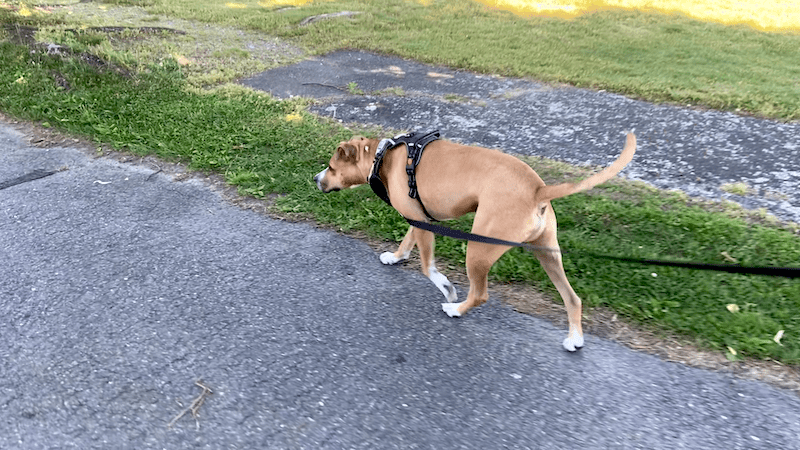
If you find yourself continuously walking in an area that presents too many triggers for your dog to handle, consider altering your route.
Does your dog go crazy at ducks? Easy – just avoid lakes and rivers.
Is your dog alarmed by the squeals of school children? No problemo! Just avoid walking during the afternoon time period when kids get out of school, and avoid the routes that they walk to get home.
You get the idea.
Some owners also opt for early morning or late evening walks when fewer people and pets are out and about, reducing the risk of encountering triggers.
Treat Scatters
A treat scatter is the practice of throwing a pile of treats on the ground to distract your reactive dog from a trigger.
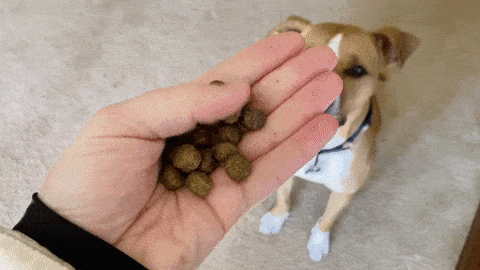
When a treat scatter is performed with a high value food item, your dog should immediately stop paying attention to the trigger and opt instead to go after the tasty treats you’ve tossed right in front of him(and if he still can’t break his focus on the trigger, that’s likely a sign that you are too close to the trigger)!
The larger the pile of treats, the longer it will take your dog to find them all, giving time for the trigger to pass by. You can also throw the treats into grass to encourage your dog to sniff around for the treats, adding more of a distraction while also encouraging your dog to sniff – a relaxing, self-soothing activity for four-footers.
Magnet Hand
Magnet hand is the practice of holding a tasty treat right in your hand and luring your dog’s head away from the trigger.
It’s best performed with a handful of treats where you can slowly dispense some of the treats while still keeping the majority in your hand, keeping the dog focused on the goodies actively coming out of your hand, rather than the trigger.
Management strategies are hugely valuable for learning how to keep your dog under his threshold and prevent undesirable reactive responses. While most professionals separate reactivity management from reactivity training work, there is certainly a lot of overlap.
Every occasion in which you use management to prevent a reactive outburst is an occasion where your dog didn’t practice the reactive barking and lunging. And we know that the more often a dog performs a behavior, the more reinforced it becomes.
On top of that, many management strategies still work at changing your dog’s underlying emotional response to the trigger. For example, performing a treat scatter whenever your dog sees another dog is building up those positive associations.
Plenty of reactive dog owners get by just fine relying solely on management strategies. So, if these practices feel more doable than regular, pre-arranged counter-conditioning sessions, that’s fine!
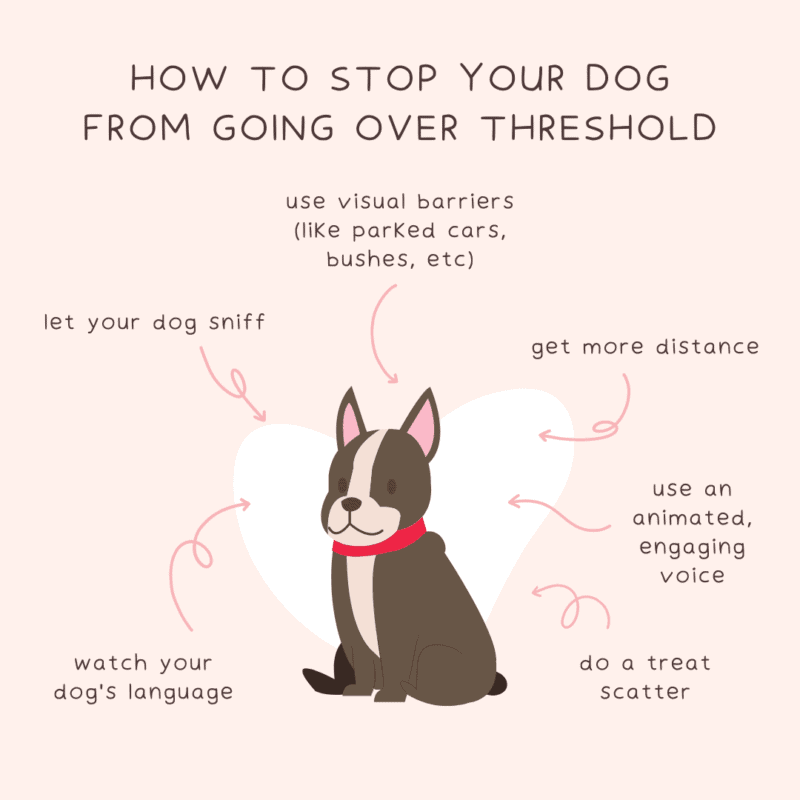
Signs Your Dog is About to Go Over Threshold
You always want to avoid having your dog go over threshold. Part of avoiding that scenario is keeping an eye out for signs that your dog is about to hit his limit.
Below are some common signs your dog may be about to go over threshold:
- Body Language. Knowing your dog’s body language is absolutely essential! Keep an eye out for high tail, stiff body language, tight mouth, furrowed brow, and forward body posture.
- Refusing to Take Treats. When a dog blatantly refuses to take treats, it means he’s feeling completely overwhelmed. Red flag!
- Taking Treats Roughly. Similarly, a dog taking treats much rougher than normal can also indicate that your dog is losing self control and is approaching his limit.
- Inability to Break Focus. If your dog is staring hard at a trigger and is unable to break his focus no matter what sounds you make or distractions you try to give, he’s likely about to go over threshold.
If you witness your dog demonstrating any of the above, consider getting more distance or doing an emergency treat scatter!
Oh No, My Dog Went Over Threshold! Now What?
Accidents can and will happen.
Nobody is perfect, and you will absolutely have occasions where your dog goes over his threshold, despite your best efforts.
That’s OK and completely normal. Here’s what you need to do if your dog goes over threshold and turns into a lunging, barking mess.
Step 1. Get Out of Dodge. When your dog goes over threshold and reacts, the first step is to immediately get away – it’s time to retreat! Turn around and get more distance while also looking for visual barriers you can take cover behind. If you’re having trouble physically moving your dog, you can use a handful of treats to lure him away, along with gentle, consistent leash pressure to keep him moving.
Step 2. Take a Deep Breath. Reactivity incidents can really shake owners up! It’s no fun to see your beloved fur kiddo turn into a barking, lunging, raging mess. Take a deep breath and give yourself a second to calm down. There’s nothing wrong with ending your walk early if you feel too stressed to continue (and truthfully, your dog might be feeling the same way).
Step 3. Reflect on What Went Wrong. After you’ve had a bit of time to calm down, take a moment to consider what went wrong. Was there anything you could have done differently to keep your dog from going over threshold? Was there something in your dog’s body language that you missed?
Step 4. Don’t Beat Yourself Up. Every owner of a reactive dog has bad days. When I first started working with my reactive dog Remy, I remember how a single reactive outburst on a walk could send me into a depressive spiral and ruin my entire day. Just remember to go easy on yourself. All this reactivity training is probably new for you, and it can be a lot to take in! The bad days don’t last forever, and with enough work, the good days will far outnumber the bad ones. You’re doing your best for your dog, and that’s enough!
Feeling Overwhelmed? Here’s How to Get Extra Help for Your Reactive Dog
No man is an island! If you’re feeling totally overwhelmed by your reactive dog or you’re not seeing as much success as you’d like with the strategies detailed above, here are some steps you can take to work with a pro.
Reactive Dog Classes
Some dog trainers will offer reactive dog group classes, where you can practice managing and counter-conditioning your dog to common canine triggers.
These groups can be a bit hit-or-miss; they work in some cases, but fail to help in others.
I’ve attended a class like this with Remy – check out our video below to get a peek at what these reactive dog group classes are like!
These types of reactive dog classes usually will have you and your dog positioned in your own space 20 feet or so away from any other dog and handler pair, and many also utilize screens or other barriers to prevent the dogs from seeing one another until it’s your turn to practice a management exercise.
However, for highly sensitive dogs with a low threshold to triggers, a room with several other dogs may be too overwhelming – even if the other dogs are away at a distance.
On the other hand, classes like these offer a great opportunity to practice management exercises alongside experienced trainers, who can suggest adjustments to your handling that can potentially make all the difference.
Hiring a Dog Behavior Consultant
Arguably, this could be considered the very first step you should take when dealing with a highly reactive dog.
It can be easy for an inexperienced handler to reinforce the wrong behaviors when working with a reactive dog and make a lot of slip-ups that can result in slower progress.
Certified dog behavior consultants specialize in dogs with behavior problems, including aggression and reactivity. They are usually trustworthy, reliable experts who can show you exactly what actions you’ll need to take to improve your dog’s reactivity using scientifically backed techniques and strategies.
Certified dog behavior consultants are more expensive than standard dog trainers because they have a higher level of expertise and education.
While a dog trainer might be cheaper, they’re rarely as helpful. Also, note that some trainers self-label themselves as behavior experts, only to use outdated and harmful strategies that do little to resolve your dog’s issues (and can even exacerbate aggression).
Instead, stick with the real aggression pros. Check out our full guide on how to find a certified dog behavior consultant for more info, or watch our video below.
Consulting with a Veterinary Behaviorist
Veterinary behaviorists are the creme de la creme of dog behavior experts. They have a deep understanding of dog cognition and behavior, while also having the advantage of being able to prescribe medication.
Unfortunately, the reality is that some dogs will make little to no progress without prescription medication. Some dogs, especially those with poor genetics, really can’t make much headway without meds.
Just as extremely anxious humans benefit most from a combination of anxiety-reducing medication alongside therapy, very fearful or anxious dogs may need medication to simply reach a baseline level of calm before they can soak up counter-conditioning work.
A decade ago some people would scoff at the idea of a dog taking Xanax, but as our understanding of canine cognition improves, it has become clear that dogs can often benefit just as much from behavioral medication as humans can.
How to Socialize a Reactive Dog
As discussed earlier, reactivity is often the result (in part) of poor socialization in puppyhood.
Unfortunately due to the way puppy socialization functions, after your dog is past the puppy socialization window, the “socialization” aspect of training is over.
Ship sailed. Milk spilt. Barn door closed.
At this point, your dog is no longer soaking up new information about the outside world with acceptance and a neutral perspective. After your pup’s socialization period, all new and novel stimuli will be treated with suspicion or even outright fear.
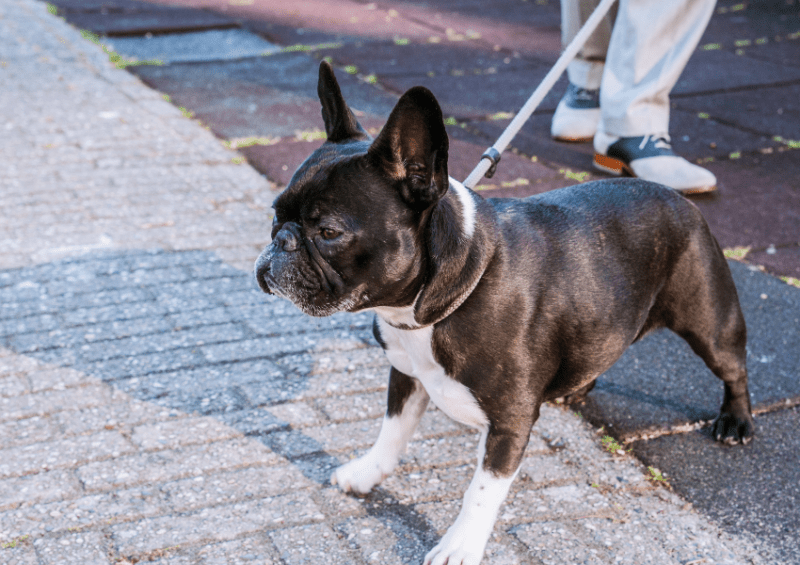
This isn’t to say that all hope is lost and that you can’t help teach your reactive dog how to feel safe and calm around unfamiliar dogs, kids, or strangers. But you’ll definitely be going uphilll.
Feeling confused? Our full article on How to Socialize an Adult Aggressive Dog explains the situation in more detail.
Instead of “socializing” an adult reactive dog, what you’ll really be doing is counter-conditioning them, using the steps outlined above.
Some owners may feel disheartened to know that they can’t quite so easily undo mistakes made in puppyhood. Try not to get down on yourself if you missed your pup’s socialization period – we all make mistakes!
How to Introduce a Reactive Dog to Another Dog
Facing an upcoming situation in which your reactive Rover will need to be around another pooch? Fear not! Having a reactive dog doesn’t mean that your pup can never have fellow canine friends.
Many owners want to be able to go on walks with other dog owners, and thankfully this is an achievable goal for many reactive dogs, so long as you take things nice and slow.
Trainers refer to this exercise as a parallel walk – you and your dog will walk together alongside another dog-handler pair, finding and maintaining a distance where both dogs can remain calm and enjoy their walk while still providing the opportunity to spend time with another dog.
Check out our video on how to do a parallel walk with a reactive dog – or read our instructions below!
Here’s how it’s done:
Step 1: Find a calm walking partner. If you’re already dealing with your own reactive dog, you certainly don’t want the partner dog to be reactive as well. This is why puppies and young dogs are usually out of the running. The best parallel walk partner dogs are older, calm, and confident. Remember, even a friendly dog who is overly enthusiastic will likely just be too overwhelming for a reactive dog to walk calmly alongside.
Step 2: Muzzle up if you need to. If your dog has nipped or bitten other dogs in the past, it may be best to start by having your pooch wear a safe and secure dog muzzle. A properly fitting muzzle will be comfortable for your dog and shouldn’t affect his enjoyment of the walk (or ability to cool himself by panting). Plus, it keeps everyone safe and takes some stress off of your shoulders (and might make your walking partner more at ease too)
Step 3: Start out at a distance. Start the walk with you and your dog roughly 20 to 40 feet or so away from the other dog and handler pair. Observe your dog’s body language while using reactive dog management techniques and the “look at me” game to help keep your dog calm.
Step 4: Move a few feet closer. If your dog is able to remain calm while walking at a comfortable distance from the other dog, you can slowly begin to close the gap. Go very slowly, moving a few feet closer as you walk parallel to the other dog.
After moving a few feet closer, always pause and closely observe your dog. Does your dog seem calm? Is he staring at the other dog, or is he disengaging often to look at you or the environment? If your dog continues to constantly look back and forth at the partner dog, or becomes hyper-fixated, do not move closer. Don’t be afraid to take more steps away from the partner dog if need be. Don’t push your dog past his threshold, and ensure that he remains calm.
Step 5: Walk alongside the partner dog. If your dog is calm enough, you can slowly close the distance until you and your dog are walking side-by-side with the other dog-handler pair. Hurrah!
Keep in mind that at no point should you let the dogs stop walking and interact with one another. Head-on interactions are much more stressful for dogs than side-by-side interactions such as a parallel walk. Don’t push your dog’s limits and instead end your walking session on a high note!
Can My Reactive Dog Play Off-Leash With Other Dogs?
Some dog-reactive pooches can play perfectly fine with certain well-matched play partners.
This is especially true for dogs who struggle specifically with leash reactivity and frustration-based reactivity, where a lot of their upset stems from their inability to go over and say hello to other dogs while on leash.
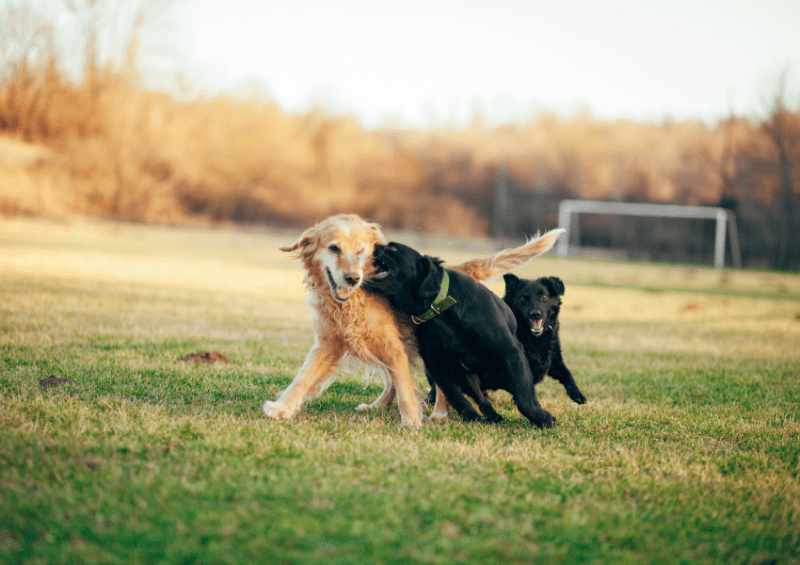
When it comes to finding an appropriate fur friends for your reactive dog, consider the following:
- Size. Small dogs can find larger dogs intimidating, and some larger dogs may have the tendency to view small dogs as prey. For a good doggie playdate match, opt for a dog friend who is of similar size.
- Play Style. Some dogs love to play rough, some bark incessantly while they play, and others are more reserved – even dainty. Try to match your dog with a dog who has a similar playstyle to avoid the dogs becoming overly frustrated with one another.
- Does Your Dog Want To Socialize? A lot of owners feel that it’s very important for their dog to have dog friends. But in reality, it’s really not a huge deal. Many dogs prefer the companionship of their favorite humans to that of strange dogs. Your dog absolutely does not need to have dog friends or play with other dogs to be happy, so long as you are providing plenty of play sessions and enrichment opportunities. Don’t forget, we humans have opposable thumbs, which is kind of a game changer for tug-of-war and fetch sessions – let’s see another dog throw a frisbee!
There’s no denying that off-leash time can be highly rewarding and beneficial for dogs, but that doesn’t mean it always needs to be in an area where other four-legged furries are roaming.
If you’re looking for safe off-leash spaces for your reactive pup, consider checking out SniffSpot!
SniffSpot is basically the airbnb of private dog barks! Folks rent out their yards or private land by the hour, allowing you to get access to safe, controlled, private areas for your dog to explore off-leash.
You can filter by a number of unique options like acreage, fencing, water-access or agility structures. You can even select if you want a SniffSpot that doesn’t have any auditory or visible signs of other animals in the area.
Sounds like it was made for reactive dogs, right? Well it was! SniffSpot’s founder created it with his own reactive dog mind when struggling to find good off-leash areas for his own dog to roam around.
Gear for Training a Reactive Dog
While training a reactive dog largely depends on the actions you take, there are also a few pieces of gear you’ll need. We’ll outline a few indispensable training tools and supplies you’ll want to have on hand when addressing your pet’s reactivity below.
Muzzle
Those who lack experience with muzzles may see them as scary – heck, some people even consider them cruel! But, nothing could be farther from the truth.
Muzzles are incredible tools that allow a dog to safely engage and interact with his environment in situations that might otherwise be unsafe.
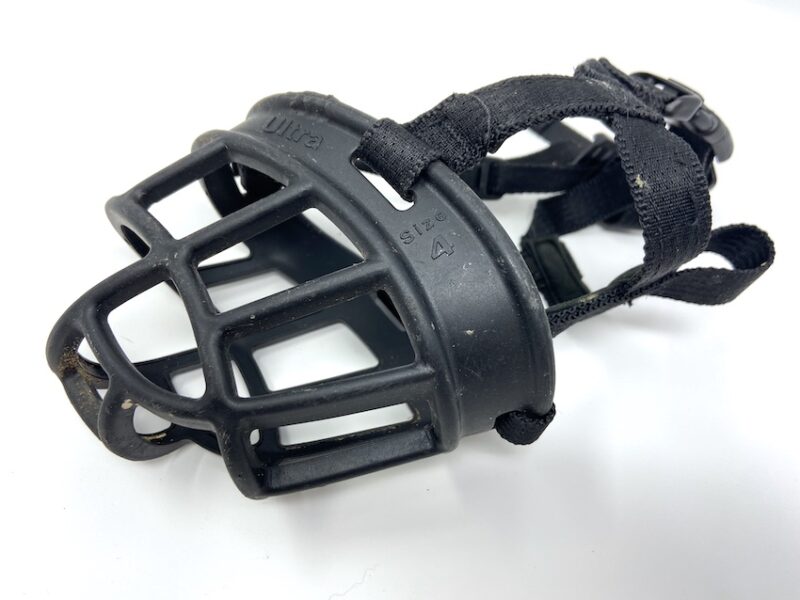
A muzzle ensures that – even in a worst-case scenario – no one will suffer a bite. Such measures keep animals and humans safe while also taking some stress and anxiety off of the handler’s shoulders.
Owners should always opt for a basket-style muzzle, which has holes large enough to allow the dog to pant, take food, and even drink water.
You should never use a muzzle which forcibly closes your dog’s mouth – these are grooming muzzles and are designed to only be used for short periods of time. They are not suitable for training or long-term use – especially during warm weather.
A basket muzzle also needs to be well-fitted to ensure that it fits comfortably. A comfortable muzzle won’t hurt at all, and dogs will often forget they’re even wearing one! However, proper muzzle use requires that you slowly desensitize your dog to the muzzle so that it’s not scary or upsetting for him.
You can learn more about how to desensitize a dog to a muzzle in our full dog muzzling guide.
Secure Harness or Flat Collar
A secure dog harness or flat collar is what you’ll use most often during your walks and training sessions with your reactive dog.
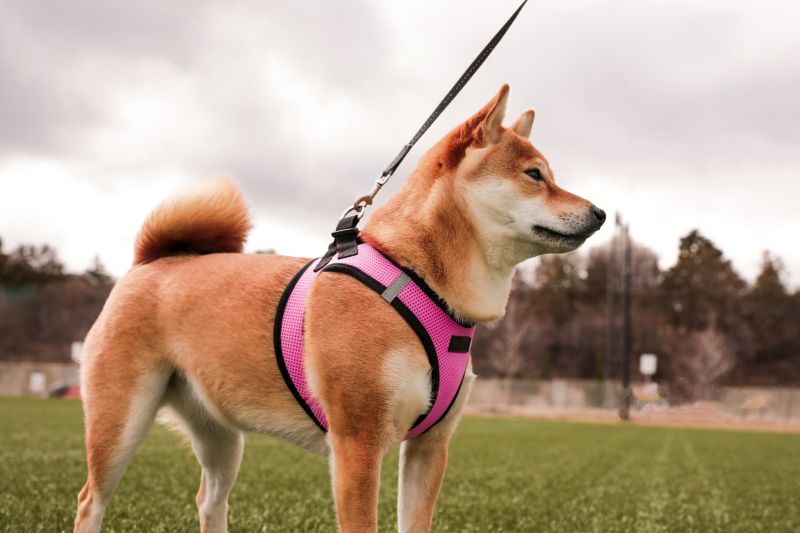
Some owners may choose to use a front-clip harness to prevent pulling and limit the power a reactive dog has while lunging. Others may opt for a head halter, although incorrect use of a head halter does have the potential to cause damage.
We don’t recommend using prong collars or slip collars, as these aversive tools inflict pain or discomfort on your pet. They’ll also add to the negative associations a reactive dog already has towards his triggers.
High-Value Treats
High-value treats are what you’ll rely on to distract your dog from triggers, help him disengage, and keep him calm.
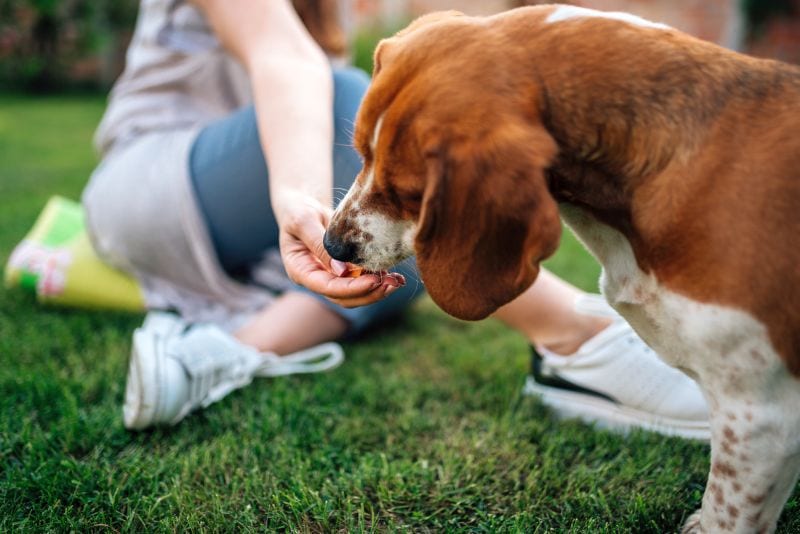
Treats can also be used to reinforce calm behavior around triggers.
The higher value the treats you use, the easier it will be for your dog to remain engaged with you. Hot dogs and cheese are popular high-value treats, but if those don’t do it for your pup, consider trying rotisserie chicken, liverwurst, and other stinky meats.
Reactive Dog Vest or Other Warning Gear (Optional)
Some owners like to dress their reactive dogs in bright warning gear that can help deter other dogs and humans from approaching. These items will often have warning words such as “not friendly” or “I need space.”
Alternatively, dressing your dog in any gear that is neon orange or red can provide subtle cues that your dog should not be approached and should be given space.
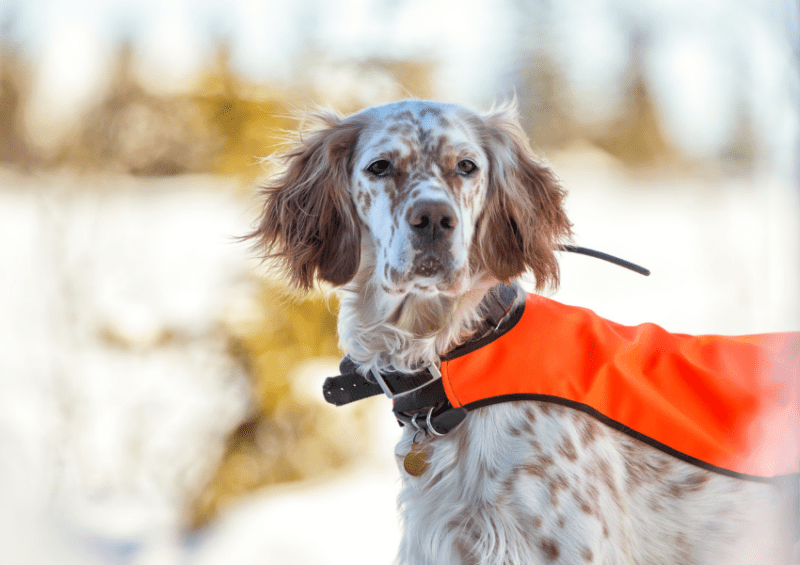
Reactive Dog Training Gear to Avoid: Stuff to Skip
On the flip-side of the reactive dog training gear equation, there are a few tools and supplies you’ll want to avoid using while managing your mutt. Generally, you’ll want to avoid using any of the following items.
Slip Leashes and Prong Collars
As noted before, aversive tools like slip leads, prong collars, and e-collars are designed to cause discomfort or pain to your dog.
While some owners choose to utilize these tools in specific scenarios (such as using an e-collar as a recall backup), they are inappropriate for reactive dog training, as these tools will add stress and discomfort to an animal that is already feeling stressed and potentially scared.
Shock Collars
If slip leashes and prong collars qualify as aversive tools, then you better believe shock collars do too! While many old-school trainers swear by these tools and may use them to “correct” a dog’s reactive behavior, current research demonstrates that they only succeed in doing one thing: exacerbating your reactive dog’s anxiety and fear.
We’re not big fans of e-collars at K9 of Mine, but we do recognize that there are some situations where using this kind of tool may offer benefits that outweigh the cons – such as utilizing an e-collar as a failsafe for an off-leash dog that goes after prey. But even knowledgeable balanced trainers recognize that e-collars are not appropriate for working with reactivity.
When you shock your dog for barking and lunging behavior, you’re failing to change your dog’s underlying emotional response to the trigger. Basically, you’re throwing a bandaid on a wound without treating it. And in fact, you’re giving a stressed, nervous dog even more reasons to feel anxious and scared.
Instead, you’ll want to rely on counter conditioning to change your dog’s underlying emotions and use positive reinforcement to encourage the behavior you do want to see.
Remember, your dog isn’t trying to give you a hard time, he’s having a hard time! Acknowledge your dog’s feelings and help him overcome them, instead of zapping him anytime he communicates his fears.
Handling a Leash Reactive Dog: My Dog Only Barks and Lunges on Leash!
Some dogs only display reactive behaviors when they are hooked onto a leash, but are fine when off leash. What gives?
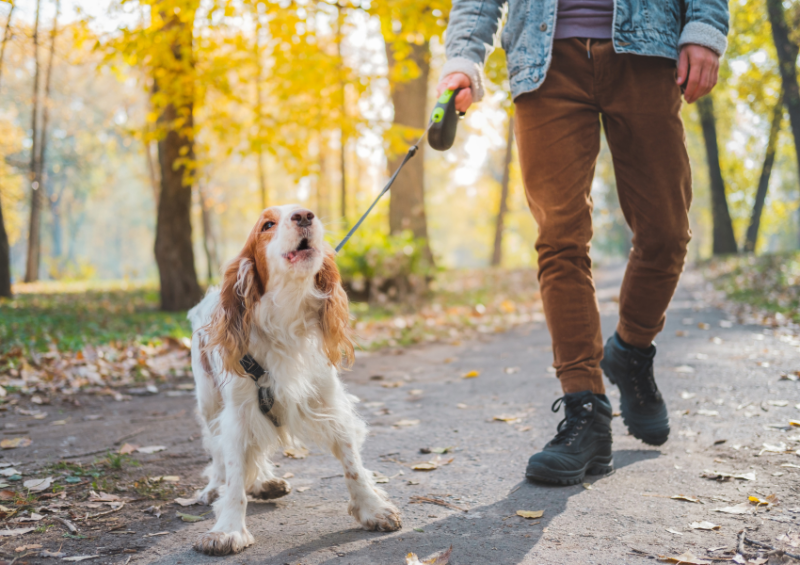
Many dogs feel more apprehensive about interacting with strangers and other dogs on leash. This is because being on a leash means that they’re essentially trapped.
They have no way of escaping or getting away should an encounter go badly, which heightens the dog’s anxiety and apprehension.
This is why it’s especially dangerous for an off-leash dog and an on-leash dog to engage with one another; there’s a big power imbalance, and both dogs know it!
For some reactive dogs, having that added sense of freedom and control of personal space that’s provided when off-leash is the only extra security the dog needs to feel more confident and comfortable around triggers.
For dogs who deal with frustration-based reactivity rather than fear-based reactivity, they may bark and lunge only on leash because they are frustrated with their physical inability to greet the other animal or human.
As we noted earlier, in these situations you still don’t want to just let your dog drag you over to the trigger that they want to greet because this reinforces the behavior and is also dangerous if the dog who is being greeted feels frightened and overwhelmed by your dog’s exuberance.
We have an entire guide on how to handle leash aggression with a leash reactive dog specifically, but basically everything we’ve covered in this guide applies to all reactive dogs, whether they are only reactive on leash or in all situations.
Reactive Dog FAQ
Canine reactivity is a complicated subject that leads to a ton of questions among owners. We’ve covered the basics, but we’ll try to address some of the most common queries owners have below.
Should I Use a Muzzle for Reactive Dog Training?
Yes! Muzzles are great tools for ensuring that your dog and his triggers (whether they are people or animals) stay safe. While they aren’t an essential part of training a reactive dog (especially if the dog’s triggers will all be kept at a substantial distance), a well-fitting muzzle that a dog has been properly desensitized to does not inflict any discomfort and is a wonderful safety tool.
What do you do if an off-leash dog approaches you while you are walking a reactive dog?
Having an off-leash dog approach your reactive dog can be very stressful, but don’t panic! There are a few options you can take depending on the demeanor of the approaching dog and the temperament of your own reactive dog.
The first option you can take is to throw treats towards the approaching dog in an effort to halt his forward movement. Just throw a handful of treats and then quickly turn around and walk away with your dog, making an effort to put plenty of obstructions between you and the other pooch.
Another option is to drop your leash. Having one off-leash dog and one on-leash dog interact always intensifies the situation, as the leashed dog often feels trapped without an escape. Sometimes, an incident can be avoided by simply letting the two off-leash dogs investigate one another and then calling your dog away.
Of course for many reactive dogs, this will not be a safe option!
Lastly, you can try yelling for a neighbor or the owner to come fetch their dog. If you have a second human walking with you, they can try to grab the off-leash dog, if the dog seems friendly with humans.
If you frequently come across off-leash dogs during your walk, you may want to consider bringing along a dog spray deterrent that you can spray towards approaching dogs to keep them away. While the spray may sting the off-leash dog, it’s better than getting involved in a dog fight!
Is there dog boarding for reactive dogs?
Yes, there are boarding options for reactive dogs, although at times they can be limited. Most dog boarding facilities put the dogs in individual crates or kennels at night, and allow the dogs to roam and play with one another during the day.
For dog-reactive dogs, you’ll want to find a boarding kennel that allows the option for a dog to not engage in dog-on-dog interaction, and instead get exercise and enrichment by being walked by a staff member.
Ideally, you’ll want to find a boarding facility that houses dogs in private rooms or “dog condos,”rather than crates, since your dog will be spending a lot of his time inside. Look for kennels that detail specific enrichment activities, such as cardboard boxes to shred or frozen kongs. Also, assess the staff’s experience level – you may want to opt for a facility with handlers that are experienced with reactive dogs.
Lastly, you’ll also need to clarify with the staff what kind of tools they’ll be using. Avoid any kennel that intends to use prong, choke, or e-collars for managing a reactive dog. These tools are already not recommended for training reactive dogs, but you especially don’t want them being used without your supervision and without seriously vetting the handlers!
Since reactive dogs require more one-on-one attention from staff than standard group play dogs, you can expect to pay a higher kenneling fee.
Alternatively, you can consider bringing in a dog sitter to watch your dog at your place. Many dogs feel more relaxed and comfortable staying in their own homes. Rover is one way to find a qualified dog sitter – but always be honest about your dog’s reactivity or behavior issues, and ensure that the sitter is an experienced handler that can manage your dog appropriately. You’ll likely need to pay a bit more for these more experienced in-home sitters.
Are there reactive dog breeds that are more likely to be reactive than others?
Any dog breeds that are more predisposed to anxiety will be more likely to be reactive than other breeds. This effectively means that dogs historically bred to be watch dogs are more likely to be reactive.
Examples of these commonly-reactive dog breeds include German shepherds (who are notoriously jumpy), Dobermans, and Rottweilers, among others. Hunting dogs can also struggle with reactivity due to their high prey drives and elevated exercise needs – especially when they aren’t getting the necessary enrichment.
***
Well, there you have it! Our mega guide about everything you need to know for reactive dog training.
Having a reactive dog can be really, really tough! Make sure to go easy on your dog as well as yourself, and don’t let yourself feel shamed by neighbors or friends who haven’t been through it. As we’ve detailed here, there are so many reasons why a dog can become reactive, and a lot of the reasons are out of an owner’s control.
As long as you’re doing your best to be your dog’s advocate and keep him safe, you’re winning!
Just remember that it takes plenty of time, effort, and patience to achieve meaningful changes in your dog’s reactivity, so persevere! It’ll be worth it in the long run!
Do you have a reactive dog at home? What kinds of things have you found helpful for keeping him calm? Have you found any games or training techniques we’ve neglected to mention?
Share them with us in the comments below!
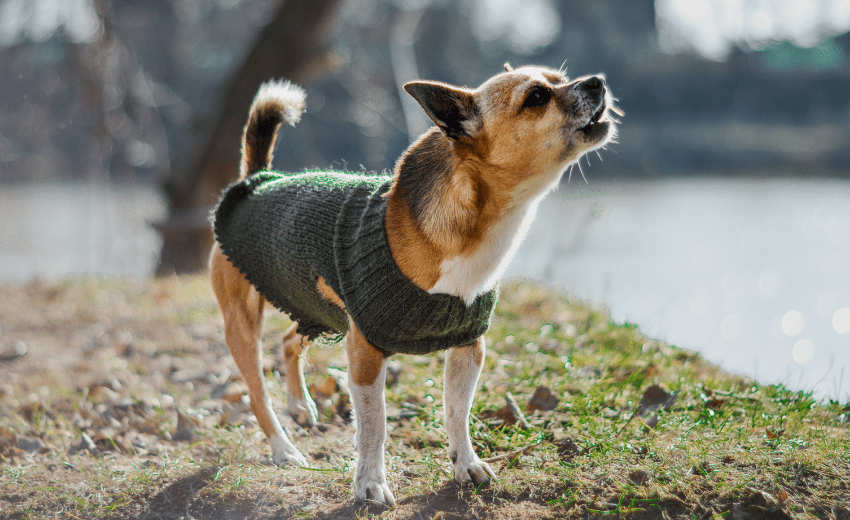
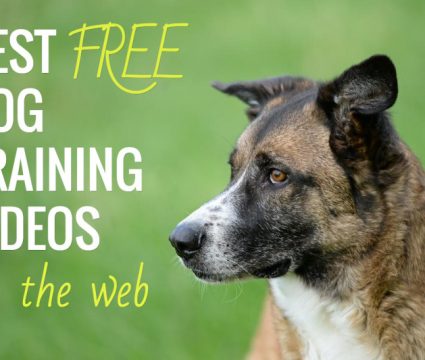



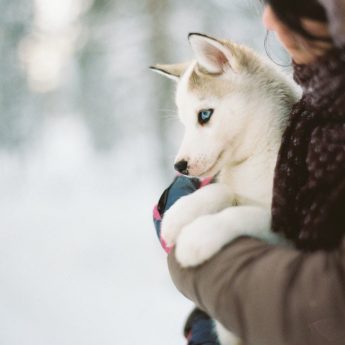
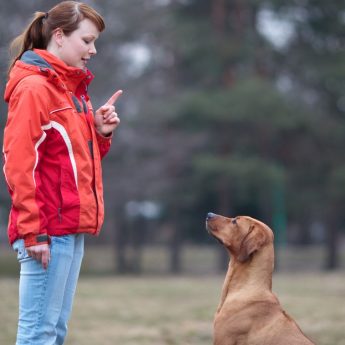
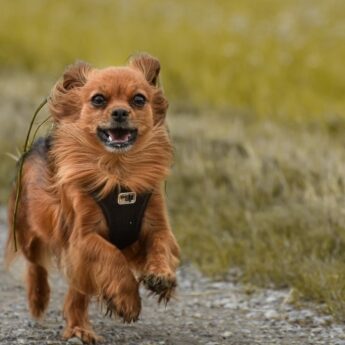
No Comments